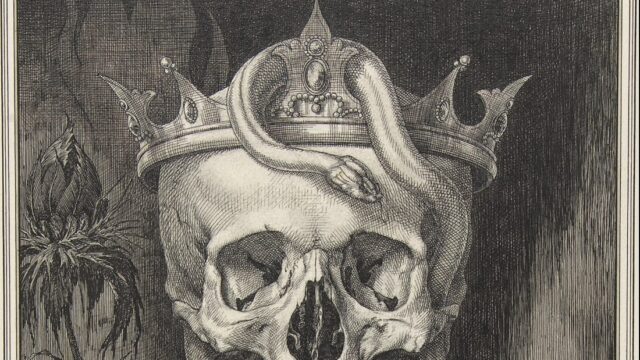Decadent Chronicles: Dead Regency

Christian Chensvold grasps the link between the Decadent Movement’s fascination with decline and the hollow spectacle of contemporary Western consumerism, suggesting today’s society is living out the very decay those artists once foretold, but lacking the European creativity that can turn horror into beauty.
“We’ll know for the first time,” sings Ronnie James Dio in his dark rock song of 1984, “if we’re evil or divine, we’re the last in line.”
To be the last of one’s kind was the quintessential distinction that haunted the authors of the Decadent Movement (1880-1914), those troubled visionaries who sensed that Western Civilization had reached its apex and would soon have nowhere to go but down — in other words, deep into the bowels of the 20th century.
While the artistic movement primarily flourished in the ultra-refined hothouse atmosphere of London and Paris, it was in the wilds of the New World that one of the foundational authors of the decadence dramatized families and races coming to their end, analyzing the maladies of the soul that afflict the last in line. In addition to essentially inventing modern horror and detective stories, Edgar Allen Poe also greatly influenced the Decadent Movement thanks to the translations of Charles Baudelaire — godfather of the movement in so many ways — which the French poet and critic published from 1852-1865.
Poe’s work that most came to define the Decadent sensibility are the tales “Ligeia,” “Berenice,” “Morella,” and “The Fall of the House of Usher,” whose influence can be seen on the defining novel of the movement, J-K Huysmans’ Against Nature from 1884. Poe’s work is analyzed through the tastes of the book’s protagonist, the effete duke Des Esseintes, as in this passage from the celebrated translation by Robert Baldick, recently revised and reissued by Penguin:
Convulsed by hereditary neuroses, maddened by moral choreas, Poe’s characters lived on their nerves; his women, his Morellas and Ligeias, possessed vast learning steeped in the mists of German philosophy and in the cabbalistic myteris of the ancient East, and all of them had the inert, boyish breasts of angels, all were, so to speak, unsexed.
And now for a contemporary tie-in from our own decadent era. You’ve no doubt noted that here in our dystopia, the sense of time is not based on traditional calendar rhythms and folk customs, but on the scheduling of retailers in the economic zone in which you live. And so, no less than 10 weeks before All Hallow’s Eve, the large American retailer Michael’s unveiled its “Dead Regency” collection, inviting consumers to take inspiration from a haunted masquerade straight out of Poe’s “Masque of the Red Death.”
Viewed through our enlightened lens, the decor collection is a deeply disturbing epitaph of the Western soul and everything it has jettisoned over the past century. Highlights include 3-D images of ladies and gentleman that turn to skeletons, as well as all the scenes familiar to artists and visionaries who glimpse the archetypal dimension of the racial imagination: waltzing ghosts, ballrooms with chandeliers, noble castles, and funeral carriages. Poe is a recurring figure in the collection, as are visions of empty rooms with typewriters, as if there’s nothing left for Western man to do but write his own obituary.
Understand that while mainstream Halloween imagery is as diverse as every other aspect of society, the “Dead Regency” collection is purely European, for this is the culture that is moribund. Another Michael’s decor collection — based on witchcraft and called “Iridescent Moon” — features items with self-loathing lines about feeling “dead inside” or becoming a ghost, perfect descriptions of the pandemic of white women with “mental-health disorders.” And speaking of which, during the five minutes I spent viewing the Halloween decor at my local branch, I saw about eight people — all women — who were either customers or employees, and each one was obese, tattooed, and nose-ringed, proving that the patriarch of the “Dead Regency” is indeed dead… You’re living in a horror story worse than anything Poe could imagine.
And on that note, we’ll end this chronicle with a work of Decadent art, Albert Joseph Penot’s Bat Woman from 1890. We could say she’s the last of her kind, but femmes fatales are proliferating in these dreary days when a volume of Edgar Allen Poe actually lifts the spirit, carrying it away to the enchanted land of European man’s once-fertile imagination, now become a vacant lot.

https://www.arktosjournal.com/p/decadent-chronicles-9-dead-regency
